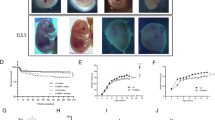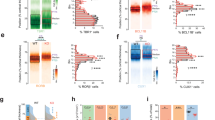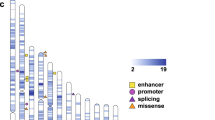Abstract
Fatty acid hydroxylase-associated neurodegeneration due to fatty acid 2-hydroxylase deficiency presents with a wide range of phenotypes including spastic paraplegia, leukodystrophy, and/or brain iron deposition. All previously described families with this disorder were consanguineous, with homozygous mutations in the probands. We describe a 10-year-old male, from a non-consanguineous family, with progressive spastic paraplegia, dystonia, ataxia, and cognitive decline associated with a sural axonal neuropathy. The use of high-throughput sequencing techniques combined with SNP array analyses revealed a novel paternally derived missense mutation and an overlapping novel maternally derived ∼28-kb genomic deletion in FA2H. This patient provides further insight into the consistent features of this disorder and expands our understanding of its phenotypic presentation. The presence of a sural nerve axonal neuropathy had not been previously associated with this disorder and so may extend the phenotype.
Similar content being viewed by others
Log in or create a free account to read this content
Gain free access to this article, as well as selected content from this journal and more on nature.com
or
References
Hama H : Fatty acid 2-hydroxylation in mammalian sphingolipid biology. Biochim Biophys Acta 2010; 1801: 405–414.
Zöller I, Meixner M, Hartmann D et al: Absence of 2-hydroxylated sphingolipids is compatible with normal neural development but causes late-onset axon and myelin sheath degeneration. J Neurosci 2008; 28: 9741–9754.
Potter KA, Kern MJ, Fullbright G et al: Central nervous system dysfunction in a mouse model of Fa2h deficiency. Glia 2011; 59: 1009–1021.
Dick KJ, Al-Mjeni R, Baskir W et al: A novel locus for an autosomal recessive hereditary spastic paraplegia. Neurology 2008; 22: 248–252.
Edvardson S, Hama H, Shaag A et al: Mutations in the fatty acid 2-hydroxilase gene are associated with leukodystrophy with spastic paraparesis and dystonia. Am J Hum Genet 2008; 83: 643–648.
Dick KJ, Eckhardt M, Paisán-Ruiz C et al: Mutation of FA2H underlies a complicated form of hereditary spastic paraplegia (SPG35). Hum Mutat 2010; 31: E1251–E1260.
Kruer MC, Paisán-Ruiz C, Boddaert N et al: Defective FA2H leads to a novel form of neurodegeneration with brain iron accumulation (NBIA). Ann Neurol 2010; 68: 611–618.
Garone C, Pippucci T, Cordelli DM et al: FA2H-related disorders: a novel c.270+3A>T splice-site mutation leads to a complex neurodegenerative phenotype. Dev Med Child Neurol 2011; 11: 1469–8749.
Wang K, Li M, Hadley D et al: PennCNV: An integrated hidden Markov model designed for high-resolution copy number variation detection in whole-genome SNP genotyping data. Genome Res 2007; 17: 1665–1674.
Manoli I, Golas G, Westbroek W et al: Chediak-Higashi syndrome with early developmental delay resulting from paternal heterodisomy of chromosome 1. Am J Med Genet 2010; 152A: 1474–1483.
Gnirke A, Melnikov A, Maguire J et al: Solution hybrid selection with ultra-long oligonucleotides for massively parallel targeted sequencing. Nat Biotechnol 2009; 27: 182–189.
Teer JK, Bonnycastle LL, Chines PS et al: Systematic comparison of three genomic enrichment methods for massively parallel DNA sequencing. Genome Res 2010; 20: 1420–1431.
Johnston JJ, Teer JK, Cherukuri PF et al: Massively parallel sequencing of exons on the X chromosome identifies RBM10 as the gene that causes a syndromic form of cleft palate. Am J Hum Genet 2010; 86: 743–748.
Alderson NL, Rembiesa BM, Walla MD, Bielawska A, Bielawski J, Hama H : The human FA2H gene encodes a fatty acid 2-hydroxylase. J Biol Chem 2004; 279: 48562–48568.
Acknowledgements
We are grateful to the patients and the parents of the family for their cooperation. We thank Shannon McNeil, Ronald Austin, Jose Salas, Chevalia Robinson, Joy Bryant, and Cheryl Hipple, Eva Baker, Bryan Brooks, Barrington Burnett, Kenneth Fischbeck, Roxanne Fischer, Hiroko Hama, Tanya Lehky, Joseph Snow, Gilbert Vezina, Lynne Wolfe, and Sandra Yang, for administrative, clinical and technical assistance, and critical analysis. This work was supported by the NIH Undiagnosed Diseases Program and the Intramural Research Program of the National Human Genome Research Institute, National Institutes of Health.
Author information
Authors and Affiliations
Consortia
Corresponding author
Ethics declarations
Competing interests
The authors declare no conflict of interest.
Rights and permissions
About this article
Cite this article
Pierson, T., Simeonov, D., Sincan, M. et al. Exome sequencing and SNP analysis detect novel compound heterozygosity in fatty acid hydroxylase-associated neurodegeneration. Eur J Hum Genet 20, 476–479 (2012). https://doi.org/10.1038/ejhg.2011.222
Received:
Revised:
Accepted:
Published:
Issue date:
DOI: https://doi.org/10.1038/ejhg.2011.222
Keywords
This article is cited by
-
Clinical and neuroimaging features of autosomal recessive spastic paraplegia 35 (SPG35): case reports, new mutations, and brief literature review
neurogenetics (2018)
-
Novel mutations in PANK2 and PLA2G6 genes in patients with neurodegenerative disorders: two case reports
BMC Medical Genetics (2017)
-
Hereditary Spastic Paraplegia: Clinical and Genetic Hallmarks
The Cerebellum (2017)
-
Human genetic disorders of sphingolipid biosynthesis
Journal of Inherited Metabolic Disease (2015)
-
Heterozygous FA2H mutations in autism spectrum disorders
BMC Medical Genetics (2013)



